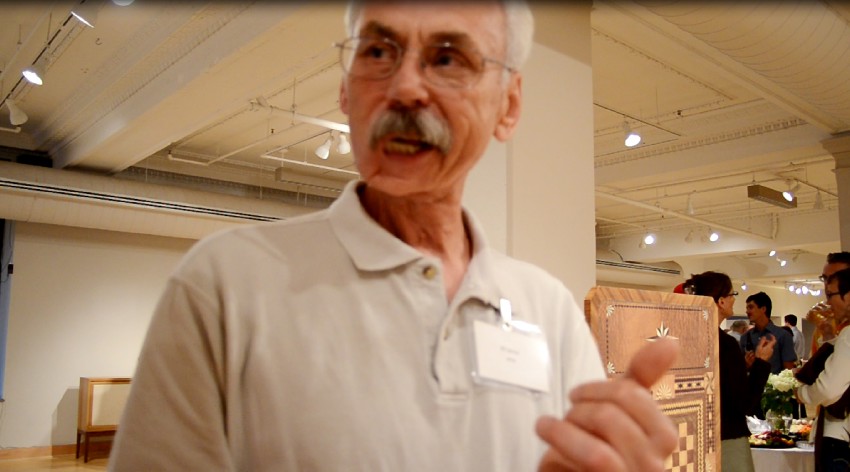Our Marketing & Design intern, Hannah Gray, recently had the opportunity to talk with some of our Speaking in Species artists. Hannah, who is currently completing her BS in Art Management from Appalachian State University, learns about the creative process in this Q&A with Greensboro artist Al Spicer. 
What drew you to wood?
I’ve always enjoyed working with my hands. Wood just seemed like a very nice material to work with – it’s not as dirty as metal.
You have a prolific background in photography. Has that influenced your woodwork at all?
I look for a lot of things in nature to try and incorporate in some of the pieces, so I’m still looking at nature and trying to capture those same kinds of elements as if I was doing photographs.
Why do you make 17th and 18th century reproductions?
It’s fascinating if you think about it. Back when they made those, they still had to stand the test of time. The wooden chairs at the cottages in the towns – all that was done by hand, by natural light or candle light, with no power tools, all hand tools. And the stuff was just gorgeous. So it’s just trying to do it like that, and knowing that I’ve got so many more pieces of machinery that will do for me anything they had to do by hand.
Do the different species of wood influence your final product?
Some woods work easier than others, some are much harder to work in. It really depends on what the piece is. If it’s going to require a lot of working, I might go with a wood that’s a little softer (one of the easier woods like mahogany), as opposed to a hard maple or oak.
Has your work changed over the years? If so, how?
I really haven’t been doing it that long! But it is changing, I really like doing intricate work with veneers and inlays and things like that, so I’m just trying to do more and more of that.

0 Comments